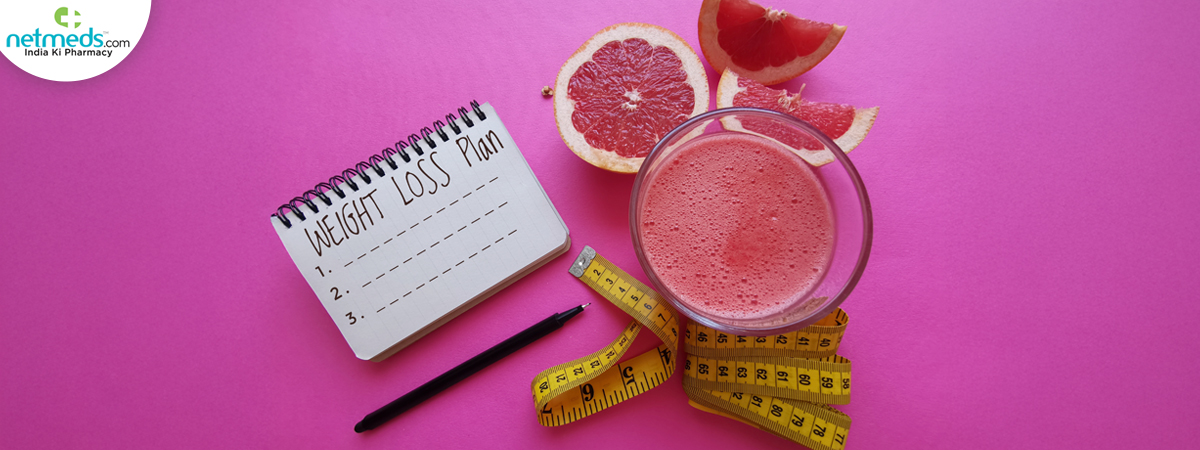With weight gain becoming a big no-no trend, staying in shape is the new normal. Everyone wants to look good, feel super fit, and stay healthy; thus, we keep hunting for effective low-calorie meal ideas. Whether it is for better energy, confidence, or just fitting into old clothes, people are more focused on losing those extra pounds. Celebrities showing off their fitness journeys have also inspired many to do the same. As a result, there are now numerous weight loss ideas available, ranging from various diets and workouts to easy meal plans and shakes. Everyone is looking for something that works and fits into their busy life.
In this article, we will explore all aspects of weight loss, from why it has become such a popular trend to how you can approach it healthily and sustainably with two simple meal replacement shakes that support weight loss without compromising on taste.
With so many people aiming to stay fit and feel confident, weight loss methods have evolved, offering a wide range of options to suit different lifestyles. One of the most convenient solutions is meal replacement products, such as bars, shakes, which are quick, nutritious, and easy to prepare at home. Meal replacement products or shakes are designed to offer a balanced mix of protein, fibre, vitamins, and minerals while keeping the calorie count low. Their goal is to create a caloric deficit. This is a condition where your body burns more calories than it consumes, leading to gradual weight loss. These shakes or bars contain 200 to 400 calories, much less than the average home-cooked meal, which may range from 500 to 800 calories. By replacing one or two meals per day with a meal replacement product, individuals can significantly reduce their overall calorie intake while still receiving essential nutrients.
What Is A Meal Replacement Diet?
Meal replacement diets have become a popular strategy for those aiming to lose weight conveniently and effectively. A practical and manageable solution for home-based weight loss efforts, these diets involve substituting one or two regular meals with a low-calorie, nutrient-dense shake or bar. Weight loss results vary depending on calorie intake, activity level, and individual metabolism. On average, people can lose between 0.5 to 1 kg per week when using meal replacements correctly.
Does It Help In Weight Loss?
Yes, numerous studies have demonstrated that people using meal replacements lose more weight compared to those on traditional calorie-restricted diets. The simplicity of preparation and portion control contributes significantly to adherence, which is a major hurdle in long-term weight loss. Furthermore, meal replacements help maintain lean muscle mass, especially those that are high in protein. This is important because losing muscle along with fat can lower your metabolic rate. With the right product and consistency, users not only lose weight but can also improve blood sugar levels, cholesterol, and other markers of metabolic health. However, for the best results, these should be combined with a balanced whole-food meal, regular exercise, and healthy lifestyle habits.
Also Read: What Is Seitan? Nutrition, Uses, Pros, And Cons Of This Wheat Meat Alternative7 Benefits Of A Meal Replacement Weight Loss Plan
When integrated into a proper weight loss plan, a meal replacement plan works best in the following way:
Portion Control
Meal replacements eliminate the guesswork in portion sizing, reducing the risk of overeating. Each shake or bar has a fixed calorie count, helping users stay within their daily limits effortlessly and avoid impulsive eating, especially when short on time or willpower.
Time-Saving Convenience
Preparing nutritious meals can be time-consuming. Meal replacements offer a quick option, especially for busy individuals. They are ideal for hectic mornings or office lunches, allowing consistent calorie control without cooking or cleaning.
Balanced Nutrition
Many meal replacements are fortified with essential vitamins and minerals. They ensure users get a range of nutrients like calcium, iron, and B vitamins, which may be lacking in typical weight loss diets or skipped meals.
Supports Muscle Maintenance
High-protein meal replacements help preserve lean muscle during weight loss. Maintaining muscle mass is crucial as it keeps your metabolism active and supports long-term fat loss rather than just dropping water weight or muscle.
Reduces Decision Fatigue
Choosing what to eat multiple times a day can lead to poor food choices. Meal replacements reduce the number of decisions you need to make, lowering the chances of dietary slip-ups and promoting consistency.
Improved Blood Sugar Control
Some low-glycaemic meal replacement shakes help stabilize blood sugar levels by preventing spikes and crashes. This is beneficial not only for weight loss but also for people managing prediabetes or type 2 diabetes.
Sustainable Habit Formation
By simplifying eating patterns, meal replacements can help users develop structured eating habits. Over time, this can lead to better self-control around food and an easier transition into more sustainable long-term eating strategies.
Precautions To Take With Meal Replacement Foods
Here is what you need to be careful about when going for any replacement meal option:
Avoid Total Meal Replacement Without Guidance
Replacing all meals with shakes can lead to nutrient deficiencies and health issues if not supervised by a professional. Your body needs fibre, antioxidants, and phytochemicals found in whole foods. At least one balanced whole-food meal should be eaten daily. Full meal replacement diets should only be followed under medical guidance, especially if you have underlying health conditions.
Monitor Long-Term Use
Over-reliance on shakes can also lead to boredom and a higher chance of diet abandonment. Try them for a small period, take a break, and then start again if it is working for you.
Choose Quality Products
Not all meal replacements are created equal. Some are loaded with sugar, artificial ingredients, or poor-quality proteins. Always check the label for ingredients and nutritional profile. Opt for shakes with at least 15–20 grams of protein, less than 10 grams of sugar, and a good balance of healthy fats and fibre. Certified or clinically tested brands are more trustworthy. Low-quality products can hinder your progress and negatively impact your health over time.
Watch For Energy Drops
If a shake does not keep you full or energized, you may end up overeating later. Choose products with slow-digesting proteins and fibre to enhance satiety. Some people may also experience fatigue or light-headedness due to low calorie intake. It is a sign that the shake is not meeting your energy needs. Monitor your body’s response and adjust accordingly. Staying hydrated and supplementing with small, healthy snacks may help bridge hunger gaps.
Don’t Skip Physical Activity
While meal replacements support weight loss through calorie control, physical activity is essential for long-term success. Exercise preserves lean muscle, supports metabolism, and boosts mood. Relying solely on diet without movement may lead to slower progress and muscle loss. Incorporate at least thirty minutes of daily exercise.
Also Read: Healthy Weight Loss Habits That Wreck Weight Loss
Here are two simple and tasty shake recipes you can make at home to support your weight loss goals. Quick to whip up, packed with nutrients, and perfect for busy mornings or when you need a healthy meal on the go, you don’t need fancy ingredients or equipment but just a blender and a few basics from your kitchen. If you are new to meal replacement shakes, these easy recipes are a great place to start!
Green Protein Power Shake (Vegan & High-Fiber)
Ingredients:
- 1 scoop plant-based protein powder (20g protein)
- 1 cup unsweetened almond milk
- 1/2 frozen banana
- 1 cup spinach
- 1 tbsp chia seeds
- 1 tbsp almond butter
- 1/2 avocado
- Ice cubes (optional)
Method
- Add almond milk to a blender
- Add spinach, frozen banana, avocado, chia seeds, almond butter, and protein powder
- Blend on high until smooth and creamy
- Add ice cubes for a chilled texture if desired
Nutritional Benefits:
This shake is packed with plant protein, healthy fats, and fibre. The banana and spinach provide essential vitamins like potassium and magnesium, while chia seeds offer omega-3s and improve satiety. Avocado contributes heart-healthy fats that support long-term fullness and weight control.
Why It Works for Weight Loss?
This shake balances macros effectively. High protein and fibre content curb cravings and prevent blood sugar spikes. It is also low in added sugars, which helps maintain a calorie deficit while providing long-lasting energy. For extra fibre, add 1 tbsp ground flaxseed. Use water instead of almond milk to reduce calories further.
Chocolate Berry Slim Shake (High-Protein & Low-Calorie)
Ingredients:
- 1 scoop chocolate whey protein powder (25g protein)
- 1 cup unsweetened oat milk
- 1/2 cup frozen mixed berries
- 1 tbsp ground flaxseeds
- 1 tsp raw cocoa powder
- 1/2 tsp cinnamon
- Ice cubes
Method
- Pour oat milk into the blender
- Add protein powder, berries, flaxseeds, cocoa, and cinnamon
- Blend until smooth and creamy
- Serve chilled or over ice
Nutritional Benefits:
This shake is rich in antioxidants from the berries and cocoa, while flaxseeds provide fibre and essential fats. Cinnamon helps regulate blood sugar levels, making this a metabolism-friendly option. Whey protein supports muscle maintenance and fat loss.
Why It Works For Weight Loss?
This shake is low in calories yet high in satiety-promoting nutrients. The combination of protein, fibre, and complex carbs from berries helps reduce appetite and stabilize blood sugar. It is ideal as a breakfast or lunch replacement. You can also customize it by adding Greek yogurt for a creamier texture and extra protein, and almond milk instead of oat milk for fewer carbs. Add greens (such as kale) to boost micronutrients without altering flavour much.
Frequently Asked Questions
Are meal replacement shakes safe to use every day?
Yes, meal replacement shakes are generally safe for daily use when consumed as one to two meals per day and paired with at least one balanced whole-food meal. However, they should not replace all your meals unless advised by a healthcare professional to avoid nutrient deficiencies.
What should I look for in a good meal replacement shake?
A quality shake should have at least twenty grams of protein, low sugar content, and a balance of healthy fats, fibre, and essential vitamins and minerals. Avoid products with artificial additives, excess sugar, or very low calories that won’t keep you full.
Can I use meal replacement shakes without exercising and still lose weight?
Yes, you can still lose weight by creating a calorie deficit through diet alone, including meal replacement shakes. However, combining shakes with regular exercise leads to better results, helps preserve muscle mass, and boosts your metabolism for long-term success.
When is the best time to drink a meal replacement shake?
The best time is when it replaces a full meal, such as breakfast or lunch. Many people find them helpful in the morning for a quick, healthy start. You can also use them post-workout or when you are too busy to cook but still want a nutritious option.
(This article is reviewed by Kalyani Krishna, Chief Content Editor)
Author Profile: Preeti Sharma
Preeti Sharma has a master’s in electronic media and mass communication and certification in short-term writing from Florida. With close to a decade of experience, she specializes in crafting engaging blogs on beauty, veterinary care, and healthy cooking. Preeti is proficient in video editing tools and produces captivating and informative content across multiple platforms.
References: Optimal Diet Strategies for Weight Loss and Weight Loss Maintenance
Ju Young Kim 1
https://pmc.ncbi.nlm.nih.gov/articles/PMC8017325/
https://www.ncbi.nlm.nih.gov/books/NBK221839/





 Previous
Previous